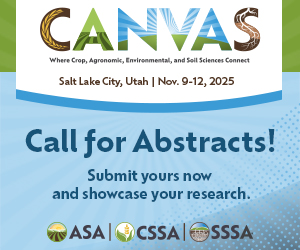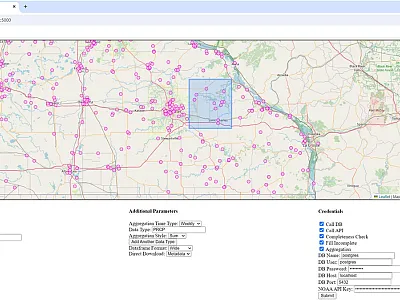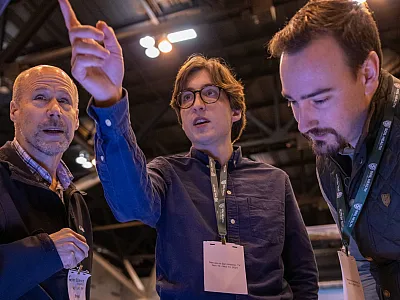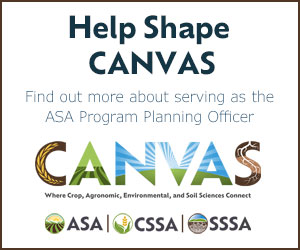Soil and people
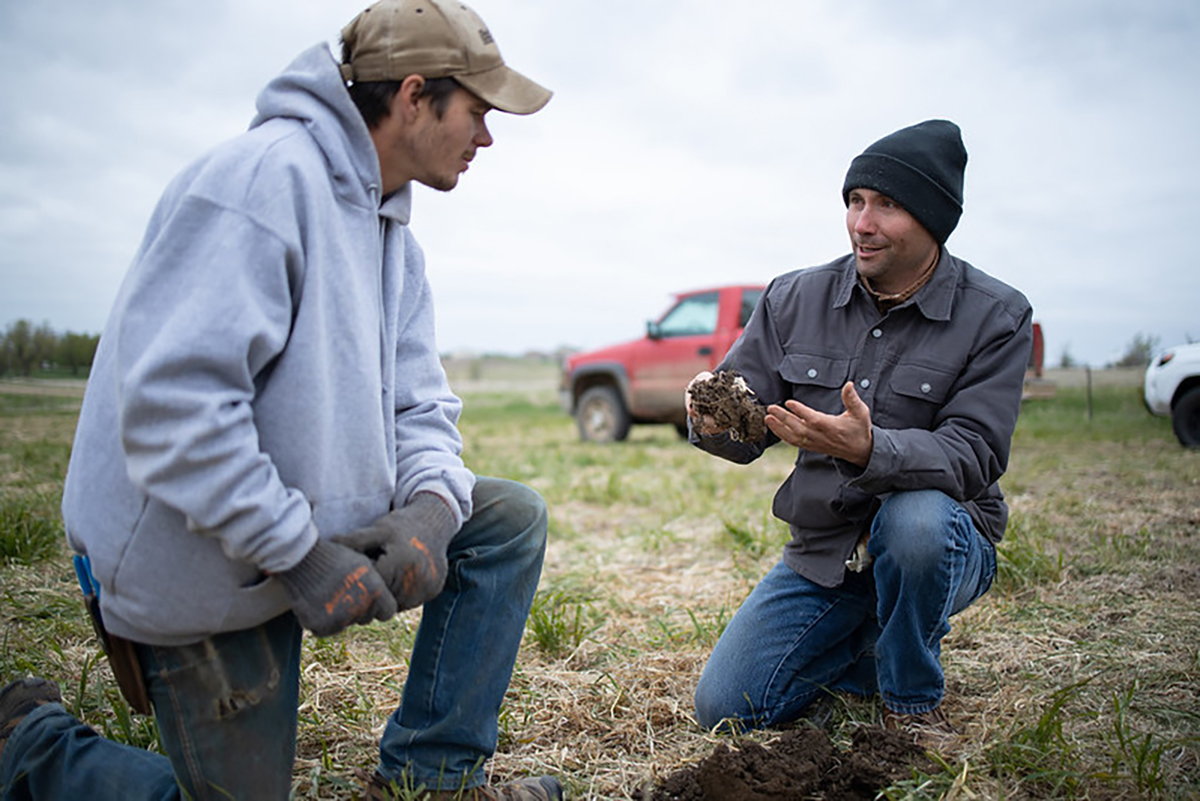

Samira Daroub becomes the president of the Soil Science Society of America (SSSA) starting Jan. 1, 2025. Samira has been active in SSSA leadership for a long time, serving in multiple roles, but her efforts were especially important in 2024 as president-elect and the program chair for our very successful San Antonio meeting. Congratulations, Samira! I invite all members to join me in doing all we can to support her in leading SSSA in 2025.
It was an incredible honor for me serve SSSA as president in 2024. This column is drawn from the presidential address that I made in San Antonio, where I presented a brief update on the Society’s activities in 2024 as well as some thoughts about our future.
SSSA updates
What a great meeting we had in San Antonio! The pre-meeting field trip, the drum and dance celebration, the workshops, the awards ceremony, the committee and board meetings, the plenary and special lectures, the cross-divisional symposia—plenty of wonderful interactions with friends and colleagues who care about soils and the planet that we inhabit. What a fantastic week!
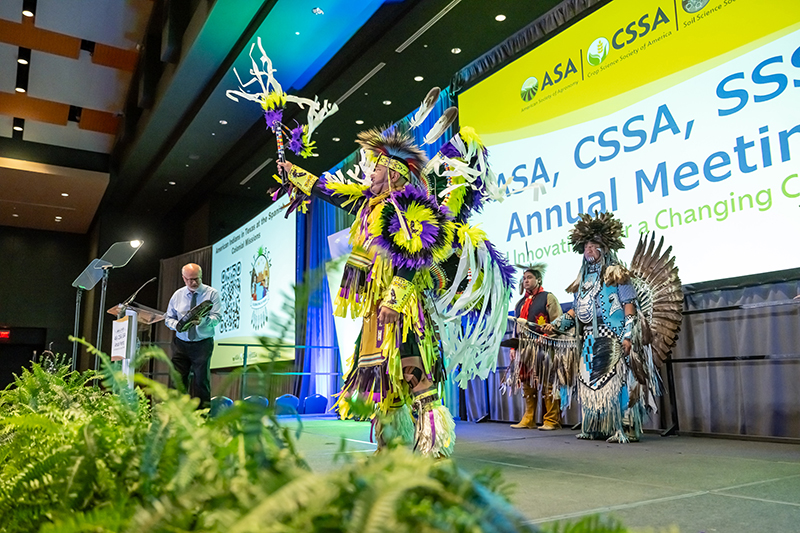
The meeting—and its thousands of interacting components—didn’t just magically appear. Many people worked hard, investing much time and energy into the program sessions, the workshops, the awards, the special lectures, and more. I especially acknowledge our 14 division chairs who, with the SSSA program planning officer, Aaron Daigh, and the meeting’s program chair, Samira Daroub, met regularly for a year to make sure that the 2024 SSSA meeting was a grand success. To the division chairs, Aaron, and Samira, I would say: Your mission was accomplished!
But if the content of the program and the speakers were the beating heart of our meeting, the mechanics of running this meeting was the lifeblood. Behind the scenes, our staff—led by Jim Cudahy, Nate Ehresman, Zoe Brindley, Grace Moran, and Sara Uttech (among many others)—did nothing less than bring our ideas to life. The collaboration between our volunteer leaders and our professional staff makes great things possible. And, no doubt, it’s why we saw a second year of record attendance in San Antonio (4128 registered attendees). And it’s one reason why we today can be rejuvenated and excited about our profession, about our science, and about our future.
I am happy to report that our Society is strong and growing. Our membership stands at 5,565. We have 604 Certified Professional Soil Scientists. At our November meeting, we recognized 11 new SSSA Fellows, and we bestowed several prestigious awards on individuals to acknowledge their outstanding work in soil science teaching, research, and industry. We also enthusiastically celebrated students for their academic excellence, initiative, and determination.
Year in review: SSSA working for you
Here are some additional examples of how SSSA worked for our members in 2024.
We have expanded our international reach and collaborations. For example, to follow on two successful joint webinars with the Soil Science Society of China in 2023, in San Antonio, we hosted a special SSSA-SSSC joint symposium: “Soil Science for Enhancing Climate Resilience and Promoting Planetary Health.” Similarly, we also worked with the Soil Science Society of Brazil on delivering joint webinars (two in 2024). And in this same spirit of collaboration, we now offer discounted fees for joint memberships to our counterpart soil scientist members in both China and Brazil.
We often say that the Earth’s soil-related challenges don’t have borders. These kinds of international, society-to-society partnerships promote sharing of knowledge and scientific collaboration concerning the diversity of soils and their management on a global basis. They also help to unite the scientific community in its message to the world and its leaders about the role that soils play in building climate resilience and ensuring food and environmental security. Our international goals are embedded in the objectives of SSSA’s five-year Strategic Plan, which we adopted a year ago.
What else was your society up to in 2024? A lot! Here are three more of our projects:
We organized an incredible Bouyoucos conference in Puerto Rico last June, Soils Without Borders, with fieldtrips, workshops, outstanding invited speakers, poster sessions, and great opportunities to know one another and soil science better.
In collaboration with ASA and CSSA, we have supported a remarkable online platform for science-based information about soil carbon and soil health for educators, farmers, professional practitioners, and the public, something we call “Decode 6.”
Recently, the SSSA board of directors has launched three ad hoc working groups to respond to members’ requests concerning new webinars and podcasts about soil science, to look into the potential for new SSSA-centric publications, and to explore new ways to organize our annual meetings and Society structures.
There is more, of course, but you get the picture. We are actively moving forward and genuinely excited about the future of SSSA—its programs for members and its work to promote excellent science.
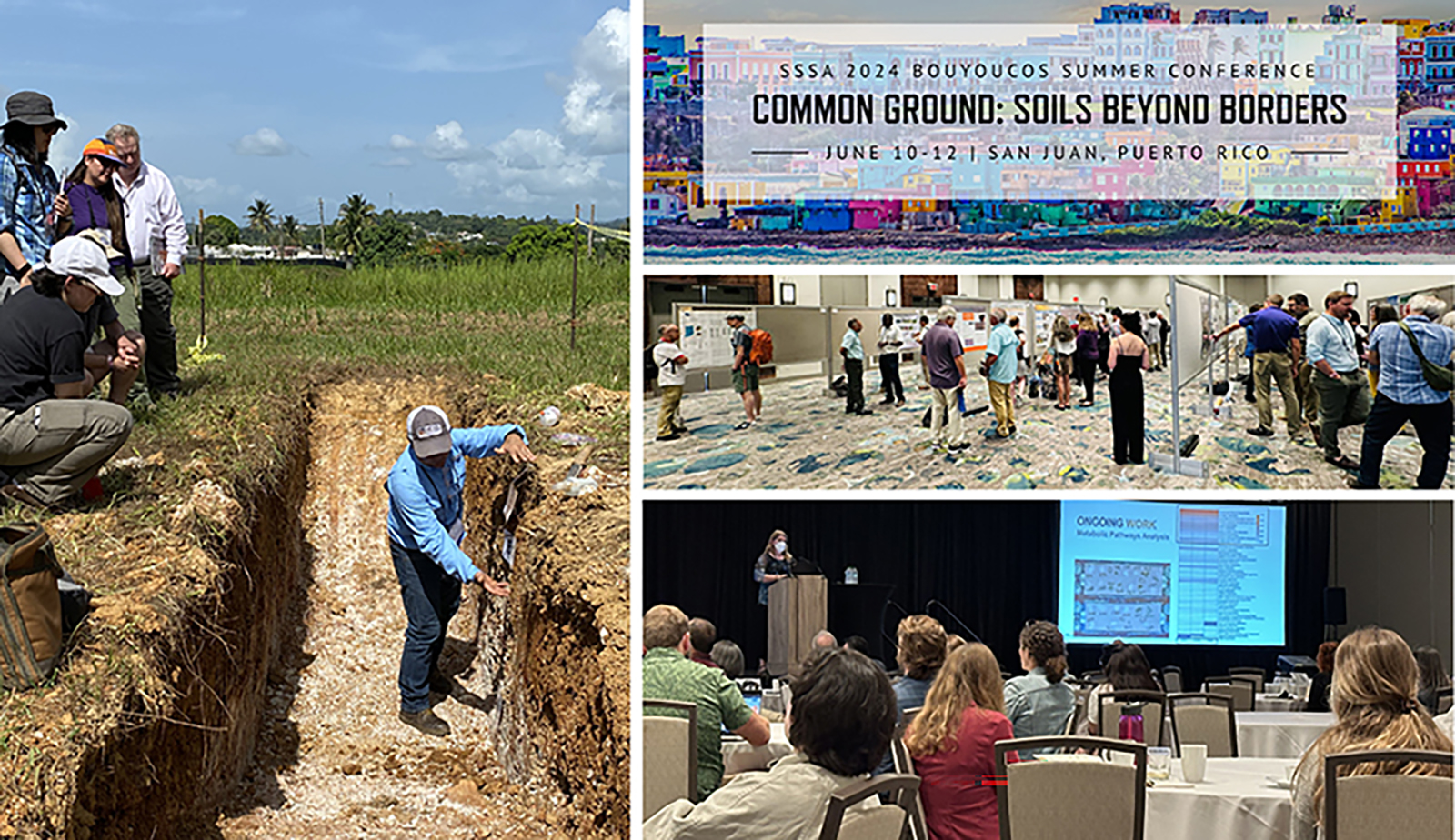
Similarities between soils and people
Now, if you read the columns that I occasionally wrote last year for CSA News, you know that I hoped to engage you to think about soils in new ways. Inspired by the exclamation that “Soils are awesome!” by2023 SSSA President Carrie Laboski, I argued in those columns that “Soils are beautiful” and “Soils are diverse,”too. When we probe them, soils tell us their stories, and we soil scientists collect, interpret, and then tell those soils’ stories in the form of models and peer-reviewed publications. You know, people are like that, too—awesome and diverse—and we love to tell stories.
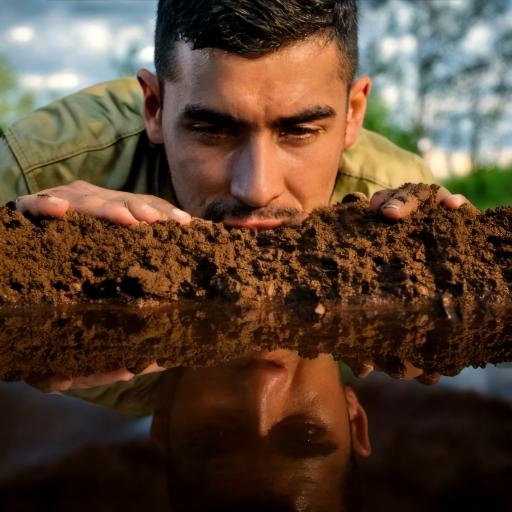
So my theme in the remainder of this column is: There is real value in looking for the similarities between soils and people. For example, like people, soils are natural bodies, made of the earth. Soils, we like to say, are the “living skin of the earth.” Soils are alive, as we are, and inhabited, as we are, by huge collections of microorganisms. Both people and soils are incredibly diverse, yet we are also both highly interconnected—in space and time. The boundaries on a soil map may appear to be sharp, but most often, they represent gradual and diffuse variations in properties. Similarly, the boundaries that appear between people often reflect overlaid social constructs rather than deep variation in needs and aspirations. Soils and people are both connected by kinships (for soils, we call it Soil Taxonomy). The concepts of soil health and human health have many parallels, about which our colleague, Alan Franzluebbers, has recently written. And, like people, soils require parent materials to begin in the first place!
Now, you might say I am “anthropomorphizing” soils with this analogy, and of course, analogies can only go so far. But stick with me. The more I think about it, this analogy becomes ever more valuable. (And remember, this is an analogy, not an allegory.)
Soils as partners in our work, not resources to exploit
We know that soils, as part of the Earth, are vital to the future of humankind on Earth, and so they deserve our protection and care. There is great value to thinking of soils not as inanimate “resources” to exploit but as partners to work with as we face Earth’s future together.
Today, we are learning to look to other cultures, past and present, for perspectives on food, agriculture, medicine, and art—frameworks that are different from, but may be complementary to, traditional Western science. The reverence that many indigenous cultures have for the Earth, for the land, and for forms of life other than the human species is an example that we can learn from. The soils and people analogy offers something similar.
As with people, we soil scientists recognize the individuality of soils, but we also prioritize the relationships that link soil properties and processes to one another. So instead of objectifying soils to study them, we can, for example, first listen holistically to what they can tell us about their histories and their context in the landscape or about their response to past climate changes, monocultures of plants, over-fertilization, or contaminating pollutants.
At this moment in history, humanity faces unprecedented changes and extraordinary challenges. The changes are political, social, economic, and environmental. And the challenges may well be existential. Honestly, the ability of humankind to rise to the occasion—for the good of life on Earth—sometimes seems very uncertain. But, really, we do not have the luxury of assuming that our previous societal choices about how to produce food, protect the environment, or provide high quality water will be sufficient for our future. Frankly, we cannot go back to the past. And we are not going back.
In the years and decades to come, the communities of people across the planet will need visionary leadership that recognizes the interconnectedness of all things and that can help us navigate the trade-offs and nuances inherent in working with complex systems. But you know, that’s who we soil scientists are! We know about connectivity. We also know how to tell the stories of deep connections between people and the land.
We must emphasize evidence-, scale-, and values-based science
So, practically speaking, how do we do that?
First, we can—we must—emphasize evidence-based science that communicates what we know about soils and soil processes as well the uncertainties of our knowledge. And we must insist on being at the table when policymakers make decisions about soils.
Second, we must emphasize scale-based science in which we renew our commitment to connect our knowledge of micrometer-, centimeter-, and meter-scale soil properties as well as daily, monthly, and annual processes into larger, watershed-scale models that can make meaningful predictions over even decadal periods. Let’s promote soil management that is based on landscapes, management that is informed by the past but focused on the future, and not management based on property lines and the “way we have always done it.”
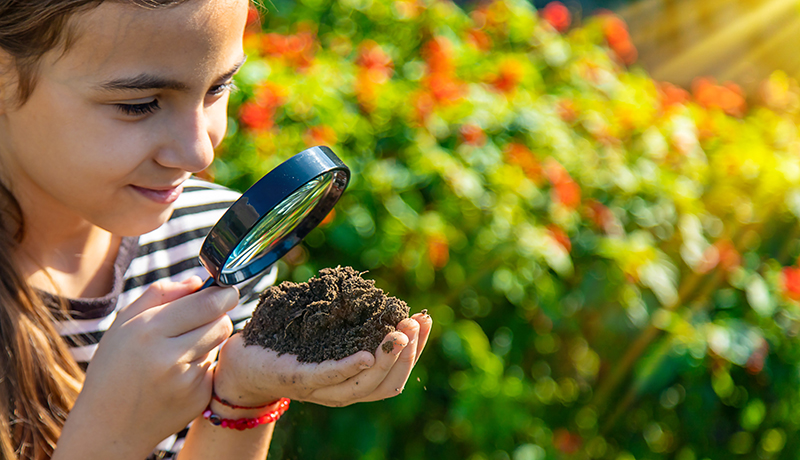
Third, in addition to evidence-based science and scale-based science, we must emphasize values-based science, so that both our research and teaching methods are guided toward the goal of protecting and remediating the precious soils that sustain life. [MN1] We need to discuss widely and refine those values in conversation with stakeholders of all kinds, including farmers, urban dwellers, teachers, students, policymakers, laborers, and other scientists.
So … let’s treat soils as we aspire to treat people—not as objects we own. Let’s be caregivers who offer respect and honor to our soil partners. As we work with soils, let’s seek first to understand them in context, prioritizing the relationships among soils and the connections of soils to people through stories, art, dance, and music. Let’s set examples for our children, teaching our children well about the magnificent gift below our feet. Let’s teach them that, like Moses, as he stood in front of that burning bush of vibrant energy, we are all standing on holy ground.
Down in the ground
Now, to put these ideas into a more lyrical framework, I would like to remind you of the final verse of singer-songwriter Peter Mayer’s song “Down in the Ground,” which was one of the highlights of the 2023 SSSA annual meeting.
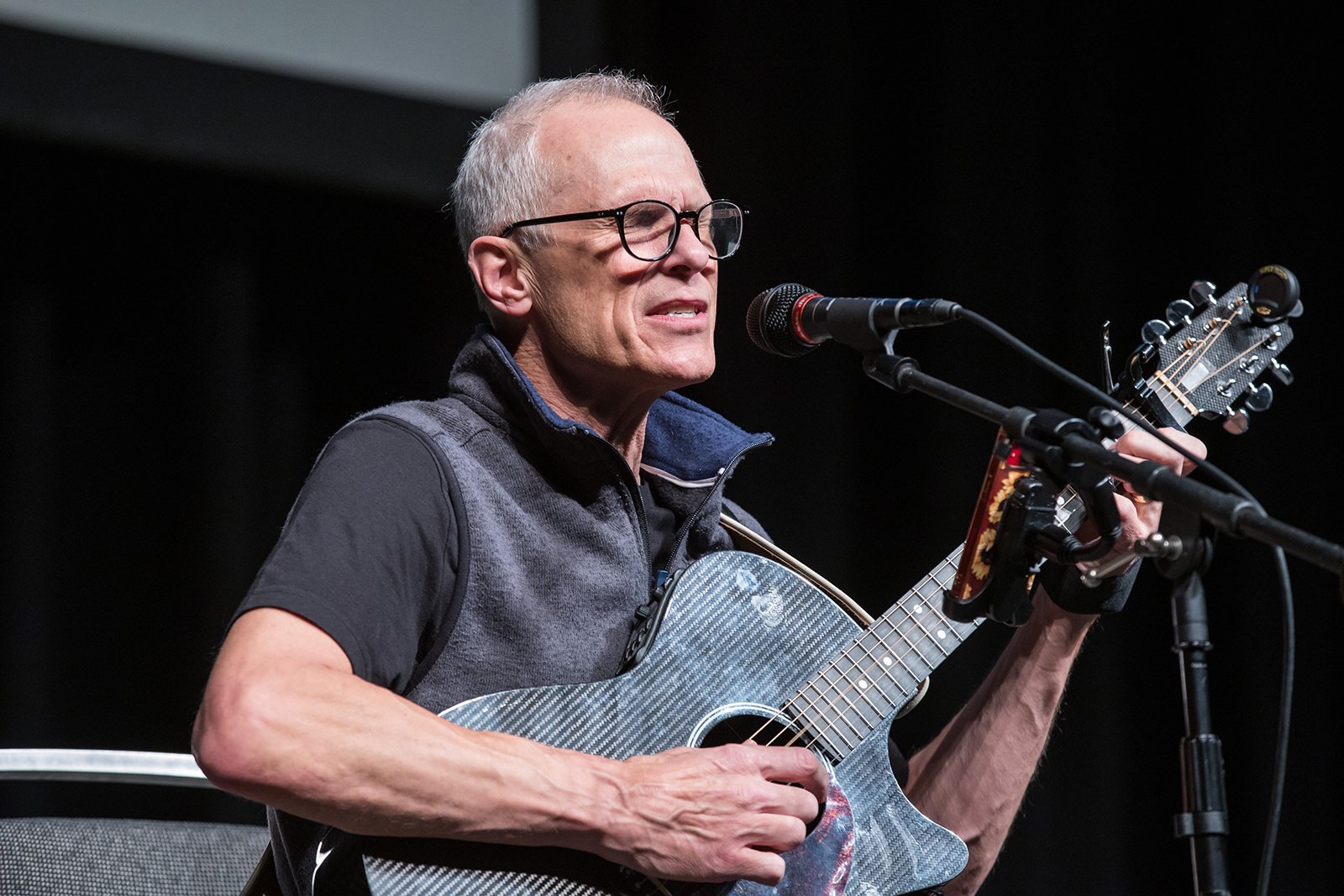
We are like the blades of grass, we are like the trees
Coming from the living soil under you and me
From the bounty of the harvest and the fertile garden rows
From the dust of our ancestors, that is how we grow
And though it may appear that we are leading separate lives
Underneath the ground all our many roots combine
In the land that is our body and the earth that is our bones
We are all the children of the universe below
Up from the soil, up from the mud
Up from the life of the ground do we come
From miraculous stone and mysterious clay
The magical sun and the mystical rain
From the numberless lives that have gone before
Who died and rise up in us once more
And that’s how the sacred circle goes around
Down in the ground…
With our feet on that sacred ground, let’s be sure to keep our balance as we move into the new year ahead of us. Let me encourage you to reach for something new in your connection to soils and soil science. Be grounded in the present, appreciative of the past, but also open to new ideas, perhaps by imagining the soils that you work with as friends whose stories you can tell. With imagination and intuition, let’s embrace our society’s next circle around the sun with new energy and new hope.
References
Franzluebbers, A. J. (2024). Our connections to soil health through simile. Agricultural & Environmental Letters, 9, e70003. https://doi.org/10.1002/ael2.70003
Laboski, C. (2023), Soils are awesome! CSA News, 68, 28. https://doi.org/10.1002/csan.21163
Mayer, P. (2023). Down in the ground. https://petermayer2.bandcamp.com/track/down-in-the-ground
Thompson, M. (2024), Soils are awesome—and beautiful! CSA News, 69, 20–23. https://doi.org/10.1002/csan.21226
Thompson, M. (2024), Soils are awesome and beautiful—and diverse! CSA News, 69, 16–18. https://doi.org/10.1002/csan.21340
Thompson, M. (2024), Soil and language. CSA News, 69, 30–32. https://doi.org/10.1002/csan.21305
Text © . The authors. CC BY-NC-ND 4.0. Except where otherwise noted, images are subject to copyright. Any reuse without express permission from the copyright owner is prohibited.



